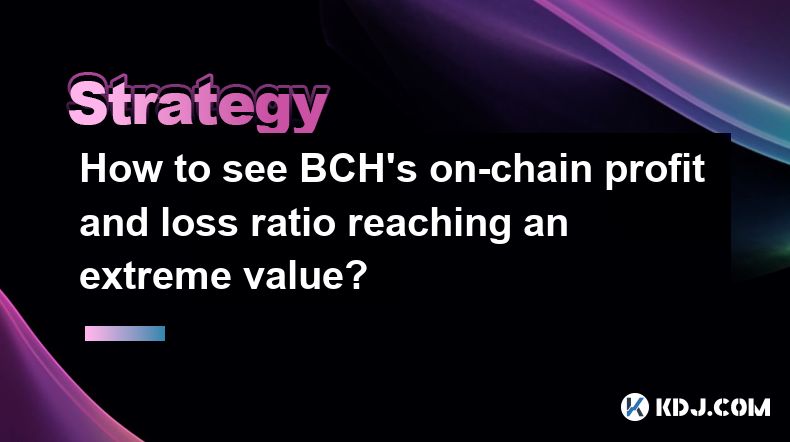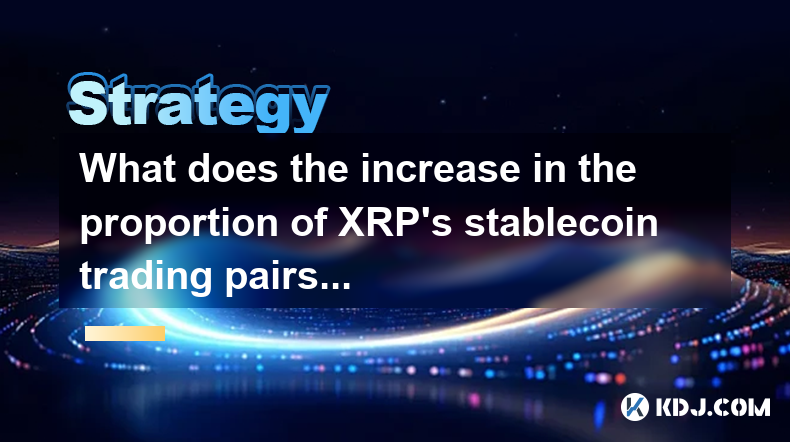-
 Bitcoin
Bitcoin $93,580.5822
5.99% -
 Ethereum
Ethereum $1,780.3758
12.27% -
 Tether USDt
Tether USDt $1.0000
0.02% -
 XRP
XRP $2.2336
7.45% -
 BNB
BNB $617.0092
2.58% -
 Solana
Solana $151.1010
8.49% -
 USDC
USDC $0.9998
-0.01% -
 Dogecoin
Dogecoin $0.1804
11.02% -
 Cardano
Cardano $0.6935
10.66% -
 TRON
TRON $0.2473
-0.16% -
 Chainlink
Chainlink $14.5597
11.46% -
 Sui
Sui $2.9078
29.47% -
 Avalanche
Avalanche $22.5900
14.68% -
 UNUS SED LEO
UNUS SED LEO $9.0735
-1.25% -
 Stellar
Stellar $0.2674
9.14% -
 Shiba Inu
Shiba Inu $0.0...01364
10.52% -
 Toncoin
Toncoin $3.1063
6.26% -
 Hedera
Hedera $0.1842
6.84% -
 Bitcoin Cash
Bitcoin Cash $361.7446
7.08% -
 Polkadot
Polkadot $4.0610
9.37% -
 Litecoin
Litecoin $83.8579
6.50% -
 Hyperliquid
Hyperliquid $18.8944
3.48% -
 Bitget Token
Bitget Token $4.6004
4.14% -
 Dai
Dai $0.9999
0.01% -
 Ethena USDe
Ethena USDe $0.9993
0.01% -
 Pi
Pi $0.6699
6.47% -
 Monero
Monero $227.1589
5.14% -
 Pepe
Pepe $0.0...09056
14.37% -
 Uniswap
Uniswap $5.9024
12.54% -
 Aptos
Aptos $5.2984
10.41%
Is it credible to see a sell signal in SOL's weekly TD sequence?
The TD Sequential indicator, used on Solana's weekly chart, signals a potential sell when the countdown reaches 13, but credibility depends on market context and volume.
Apr 23, 2025 at 11:14 am

Understanding the TD Sequential Indicator
The TD Sequential indicator, developed by Tom DeMark, is a popular tool among traders for identifying potential price reversals in financial markets, including cryptocurrencies like Solana (SOL). This indicator is based on a series of numbers that count the number of consecutive price bars meeting specific criteria. When the count reaches a certain number, it generates a buy or sell signal. For the weekly TD sequence, the indicator analyzes weekly candlestick data to provide longer-term signals.
The Mechanics of TD Sequential
The TD Sequential indicator uses two main setups: the TD Setup and the TD Countdown. The TD Setup counts up to 9 or down to -9, depending on whether the market is in an uptrend or downtrend. Once the setup is complete, the TD Countdown begins, counting up to 13 or down to -13. A sell signal is generated when the countdown reaches 13 in an uptrend, and a buy signal is generated when it reaches -13 in a downtrend.
Applying TD Sequential to SOL's Weekly Chart
When analyzing Solana's weekly chart using the TD Sequential indicator, traders look for a completed TD Setup followed by a TD Countdown reaching 13. This sequence would indicate a potential sell signal, suggesting that the price of SOL might reverse and start a downward trend. To determine the credibility of this signal, traders must consider several factors.
Factors Influencing the Credibility of the Signal
The credibility of a sell signal in SOL's weekly TD sequence depends on various elements. Market context is crucial; the signal's reliability increases if it aligns with other technical indicators or significant market events. Volume is another important factor; a sell signal accompanied by high trading volume can be more credible than one with low volume. Additionally, the historical accuracy of the TD Sequential indicator on SOL's chart should be considered. Traders often backtest the indicator to see how well it has predicted past reversals.
Evaluating the Signal's Accuracy
To evaluate the accuracy of a sell signal in SOL's weekly TD sequence, traders can perform a backtest. This involves applying the TD Sequential indicator to historical data of SOL and observing how often the signals accurately predicted price reversals. A high success rate in backtesting can increase confidence in the signal's credibility. However, traders must be aware that past performance does not guarantee future results, and other market factors should also be considered.
Combining TD Sequential with Other Indicators
While the TD Sequential indicator can be powerful, it is often more effective when used in conjunction with other technical analysis tools. For instance, traders might look at moving averages, RSI (Relative Strength Index), or MACD (Moving Average Convergence Divergence) to confirm the sell signal. If multiple indicators suggest a bearish trend, the credibility of the TD Sequential sell signal increases. Conversely, if other indicators do not align with the sell signal, traders might be more cautious.
Practical Application in Trading
Traders using the TD Sequential indicator for SOL's weekly chart should follow a systematic approach. Here are the steps to apply the indicator effectively:
- Identify the TD Setup: Look for a completed 9-count in an uptrend or -9-count in a downtrend on the weekly chart.
- Monitor the TD Countdown: Once the setup is complete, track the countdown to 13 or -13.
- Confirm the Signal: Check for alignment with other technical indicators and market conditions.
- Execute the Trade: If the signal is credible and confirmed, consider entering a short position on SOL.
Risk Management and Signal Interpretation
When acting on a sell signal from the TD Sequential indicator, risk management is crucial. Traders should set stop-loss orders to limit potential losses if the market moves against the signal. Additionally, understanding the nuances of the indicator is important. For example, a false signal can occur if the countdown reaches 13 but the price does not reverse as expected. Traders should be prepared for such scenarios and adjust their strategies accordingly.
Frequently Asked Questions
Q: Can the TD Sequential indicator be used for intraday trading on SOL?
A: While the TD Sequential indicator is commonly used on daily and weekly charts, it can be adapted for intraday trading on SOL. However, traders should be aware that the signals may be more volatile and less reliable on shorter timeframes due to increased market noise.
Q: How often should the TD Sequential indicator be recalculated for SOL's weekly chart?
A: The TD Sequential indicator should be recalculated weekly for SOL's weekly chart. Traders should review the indicator at the end of each week to assess any new signals or changes in the existing sequence.
Q: Are there any specific conditions under which the TD Sequential sell signal is more reliable for SOL?
A: The TD Sequential sell signal for SOL is generally more reliable when it coincides with other bearish indicators, such as a bearish divergence in the RSI or a bearish crossover in the MACD. Additionally, if the sell signal occurs near a significant resistance level, its credibility increases.
Q: How can traders avoid false signals when using the TD Sequential indicator on SOL's weekly chart?
A: To avoid false signals, traders should use the TD Sequential indicator in conjunction with other technical analysis tools and consider the broader market context. Setting strict entry and exit rules, along with proper risk management, can also help mitigate the impact of false signals.
Disclaimer:info@kdj.com
The information provided is not trading advice. kdj.com does not assume any responsibility for any investments made based on the information provided in this article. Cryptocurrencies are highly volatile and it is highly recommended that you invest with caution after thorough research!
If you believe that the content used on this website infringes your copyright, please contact us immediately (info@kdj.com) and we will delete it promptly.
- Bitcoin (BTC) rose from Tuesday’s low of $88,000 to above $93,500 in Asian morning hours
- 2025-04-23 14:45:12
- 5 Best Free Cloud Mining Websites to Make Money Bitcoin and Dogecoin in 2025
- 2025-04-23 14:45:12
- MiL.k Partners with Galxe to Expand Network and Connect Korean Users to Global Web3 Ecosystem
- 2025-04-23 14:40:13
- Trump Media and Technology Group Ventures into the World of Finance
- 2025-04-23 14:40:13
- AI-Driven Token Projects Are Poised to Revolutionize the World of Finance by 2025
- 2025-04-23 14:35:13
- Cantor Fitzgerald, SoftBank, and Tether Team Up to Form a Bitcoin Investment Vehicle
- 2025-04-23 14:35:13
Related knowledge

Where can I find the current average holding cost of XRP in the market?
Apr 22,2025 at 11:00pm
Where can I find the current average holding cost of XRP in the market? Finding the current average holding cost of XRP in the market can be a challenging task, as this information is not readily available on most mainstream cryptocurrency platforms. However, there are several methods and resources that you can use to estimate this figure. In this artic...

Where is the short-term holding cost line of BCH?
Apr 23,2025 at 06:00am
The short-term holding cost line of Bitcoin Cash (BCH) is a crucial metric for traders and investors looking to understand the immediate market sentiment and potential price movements. This line represents the average cost at which BCH has been held for a short period, typically considered to be less than 30 days. By analyzing this metric, market partic...

Is BCH's UTXO age distribution useful for judging buying and selling points?
Apr 23,2025 at 02:07am
The concept of UTXO (Unspent Transaction Output) age distribution in Bitcoin Cash (BCH) can be a valuable tool for analyzing market trends and potentially identifying buying and selling points. UTXO age distribution refers to the age of unspent outputs in the blockchain, which can provide insights into the behavior of different types of investors and th...

Can BCH's PSAR indicator chase the rise when it turns from empty to long?
Apr 22,2025 at 10:35pm
The Parabolic Stop and Reverse (PSAR) indicator is a popular tool among traders in the cryptocurrency market, including those trading Bitcoin Cash (BCH). The PSAR indicator is designed to identify potential reversals in the price trend of an asset. When the PSAR indicator turns from empty to long, it suggests a potential bullish trend, prompting traders...

How to see BCH's on-chain profit and loss ratio reaching an extreme value?
Apr 23,2025 at 08:35am
Introduction to BCH On-Chain Profit and Loss RatioBitcoin Cash (BCH), a fork of Bitcoin, has its own ecosystem with a significant on-chain activity. One of the critical metrics to assess the health and sentiment of BCH is the on-chain profit and loss ratio. This ratio helps investors and analysts understand whether the majority of BCH holders are in pro...

What does the increase in the proportion of XRP's stablecoin trading pairs indicate?
Apr 23,2025 at 02:00am
The increase in the proportion of XRP's stablecoin trading pairs indicates a significant shift in the trading dynamics of XRP on cryptocurrency exchanges. This trend suggests several important factors at play within the XRP ecosystem and the broader crypto market. Let's delve deeper into what this increase signifies. Higher Liquidity and Trading VolumeT...

Where can I find the current average holding cost of XRP in the market?
Apr 22,2025 at 11:00pm
Where can I find the current average holding cost of XRP in the market? Finding the current average holding cost of XRP in the market can be a challenging task, as this information is not readily available on most mainstream cryptocurrency platforms. However, there are several methods and resources that you can use to estimate this figure. In this artic...

Where is the short-term holding cost line of BCH?
Apr 23,2025 at 06:00am
The short-term holding cost line of Bitcoin Cash (BCH) is a crucial metric for traders and investors looking to understand the immediate market sentiment and potential price movements. This line represents the average cost at which BCH has been held for a short period, typically considered to be less than 30 days. By analyzing this metric, market partic...

Is BCH's UTXO age distribution useful for judging buying and selling points?
Apr 23,2025 at 02:07am
The concept of UTXO (Unspent Transaction Output) age distribution in Bitcoin Cash (BCH) can be a valuable tool for analyzing market trends and potentially identifying buying and selling points. UTXO age distribution refers to the age of unspent outputs in the blockchain, which can provide insights into the behavior of different types of investors and th...

Can BCH's PSAR indicator chase the rise when it turns from empty to long?
Apr 22,2025 at 10:35pm
The Parabolic Stop and Reverse (PSAR) indicator is a popular tool among traders in the cryptocurrency market, including those trading Bitcoin Cash (BCH). The PSAR indicator is designed to identify potential reversals in the price trend of an asset. When the PSAR indicator turns from empty to long, it suggests a potential bullish trend, prompting traders...

How to see BCH's on-chain profit and loss ratio reaching an extreme value?
Apr 23,2025 at 08:35am
Introduction to BCH On-Chain Profit and Loss RatioBitcoin Cash (BCH), a fork of Bitcoin, has its own ecosystem with a significant on-chain activity. One of the critical metrics to assess the health and sentiment of BCH is the on-chain profit and loss ratio. This ratio helps investors and analysts understand whether the majority of BCH holders are in pro...

What does the increase in the proportion of XRP's stablecoin trading pairs indicate?
Apr 23,2025 at 02:00am
The increase in the proportion of XRP's stablecoin trading pairs indicates a significant shift in the trading dynamics of XRP on cryptocurrency exchanges. This trend suggests several important factors at play within the XRP ecosystem and the broader crypto market. Let's delve deeper into what this increase signifies. Higher Liquidity and Trading VolumeT...
See all articles
























































































